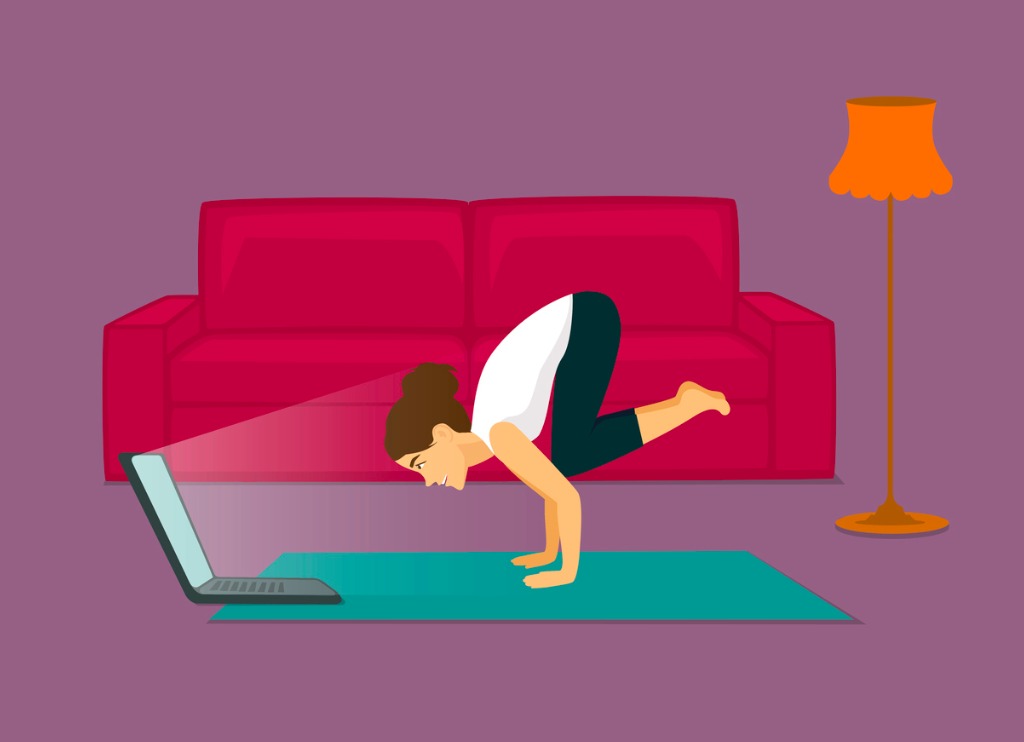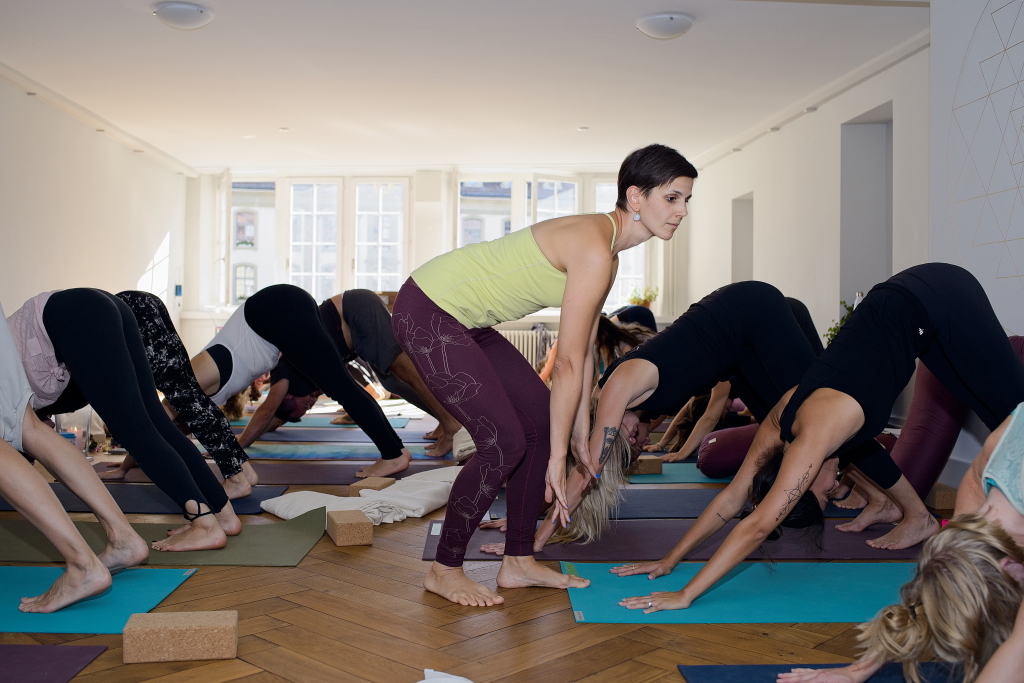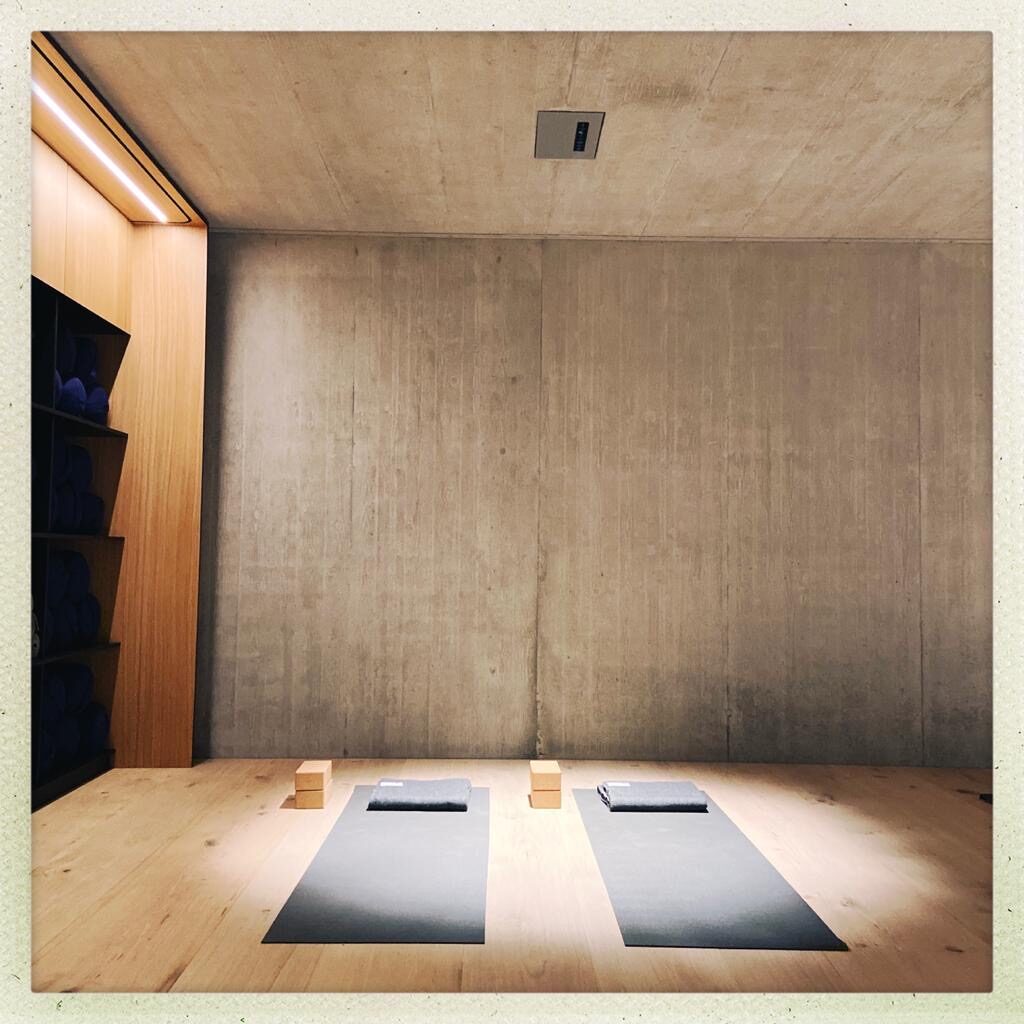
Sunday, March 15: Towards evening I watch a domino wave go through the local yoga scene in Berne, Switzerland: one studio after another is closing their doors due to the COVID-19 containment measures imposed by the federal council.
For the last six months I’ve been renting space in the old town for the couple of classes that I teach on a weekly basis. At first, I think the federal ban for schools and other educational institutions would give me some time off from teaching. I also work part-time in a corporate job these days, which means I don’t have to worry about the financial implications. But shortly after the news becomes official, a student texts me and asks if we can continue our postnatal yoga class via Zoom. I promise her to give it a try.
I’m surprised by how good it feels to reconnect with my students. A week later, I‘m teaching all of my classes online and have even added one extra on Saturday morning.
When I teach, I remember who I am. It makes all the difference to continue being useful in these extraordinary times of seclusion. Teaching gives me structure and stability and the digital interactions with my students makes existence seem almost normal these days. Even online every class unfolds into a feeling of connectedness. Maybe I don’t have a choice, other than to teach, if I want to stay sane.
Teaching for free
Like many other yoga teachers, I’ve taken a leap outside my comfort zone almost overnight. It’s weird to be speaking to yourself and the screen while you teach. At the beginning, I was disoriented. When I teach in a studio space, I see what students are doing and that directly feeds into what I will cue next. Now I demonstrate everything as I verbally guide through the sequence, which sometimes leaves me short of breath.

While we may not be able to cater directly to our students’ needs, as teachers, we still have a lot of knowledge to share. Almost every yoga teacher I know is constantly refining their skill through self-practice, through teaching itself and going to additional trainings and workshops several times a year.
Even if the medium has changed, we’re offering students the worth of our training as teachers, our experience and our ongoing investment. That boils down to value for money. And don’t forget the galvanizing power of our sheer love for what we do.
This is part of the reason why I never thought twice about charging for my online classes. There’s also the fact that I give my students my time, and so does my husband, who watches the kids while I teach in the next room.
I was completely taken aback when a good friend of mine said she’s comfortable teaching for free. She feels that online classes are a poor substitute for the real thing and isn’t comfortable charging for them. I would say they’re just different.
We should also consider that yoga is a billion dollar industry — $11.6 billion by 2020 in the United States alone, to be exact. That means, some people are making a shitload of money, while many a penniless yoga teacher is struggling to make ends meet and offers free online classes at a time of crisis. This is probably the same yoga teacher who gives the shirt off their back for their students and agrees to teach for ridiculous wages because the studio has a take-it-or-leave-it policy. It makes me livid just to think about it.
I checked online and saw my fears confirmed: Most studios and some self-employed teachers in my community are teaching on their social media livestreams and YouTube channels for free. They’re saying this is a way to support the community when they need their yoga practice the most. Personally, I think it’s also a way to remind people you’re still here, so they won’t forget you.
I needed more information, so I asked how yoga teachers out there felt about offering classes for free in a social media story. Did this sit right with them? Did they think it was okay?
Pretty much every other person in my social media following is either a yoga teacher or somehow involved in the world of yoga. Do you know how many replies I got? Two. I’m not kidding.
This makes me believe that people either don’t think about what they’re doing or are too scared to start thinking about it.
New York City grit
The plethora of online classes has one significant perk for me: I get to reconnect with my yoga roots in New York City. This is where I did my foundational training. These are the teachers that shaped me in my beginnings. Now I can practice with them again on a weekly basis. And I remember some valuable lessons.
The first teacher I studied with in NYC always said to me: “You don’t teach for free. Ever. No matter how much exposure you gain from it. Your time and effort and education are worth a monetary exchange.”
It wasn’t easy for me as a total people pleaser to say no in the beginning of my life as a teacher. It still isn’t sometimes. But I’ve learned that when you don’t ask for anything in return for your services or skill, people stop attaching any value to them. The opposite is also true. If you say no to selling yourself short, it only increases your magnetism — another thing my confident New York teachers taught me by example.
Devaluing yoga and ourselves
I worry about what’s going to happen once yoga studios can unroll their mats again. After benefitting from free online yoga for weeks or months in a row, will students still be willing to pay good money for their Hatha Flow or Restorative and meditation?

Or will they be perfectly happy to keep going through their sun salutations in the comfort of their own home, without having to pay or only making a donation?
I’m afraid that by offering classes for free we’re communicating that our hard-earned knowledge and experience is worth nothing. And that’s after we’ve spent countless hours and thousands of euros for further education.
Online, I see a lot of yoga teachers declaring that all they want to do is support their community through difficult times. Since many students might be in tight spot financially, they will do so for free. But I’m pretty sure that many yoga teachers are struggling themselves these days. And if you’re not, why ruin the market for others who depend on making money off their skill?
Everyone I see teaching online and charging for it, has set their class fee at $10 or 12 Euro (or 13 Swiss franks in my case). That should be doable for almost everyone. And if not, I don’t know a single yoga teacher who would turn a student away if they couldn’t afford to pay.
I can only guess at what the yoga industry will be on the other side of this crisis. I’ve chosen yoga as my career and my life’s work and that’s not going to change. But I wonder if it’s still going to be possible to make a living with yoga. Not that it was easy before.
The current situation is exacerbating a trend that I’ve observed for many years: By offering our classes for free, we’re devaluing ourselves and yoga. I’m sure that students appreciate the generous gesture. But I think in the long run it’s going to make them reluctant to pay for classes, because they’ve become accustomed to freeloading. And that’s hugely unfair to us who rely on making money by offering the practice that we love, that we’ve invested money and time in learning and that we’ve become adept at sharing.

No comments.